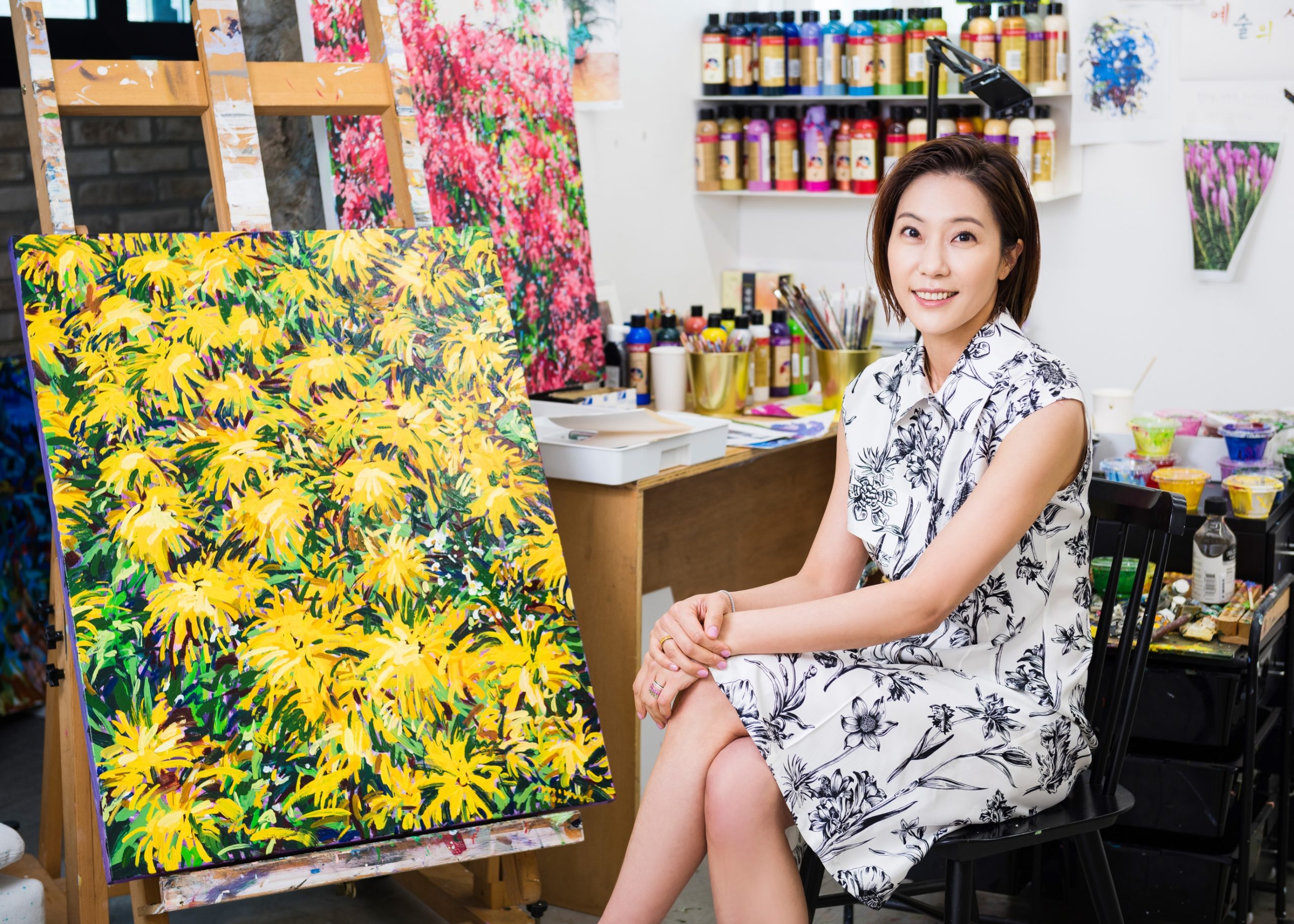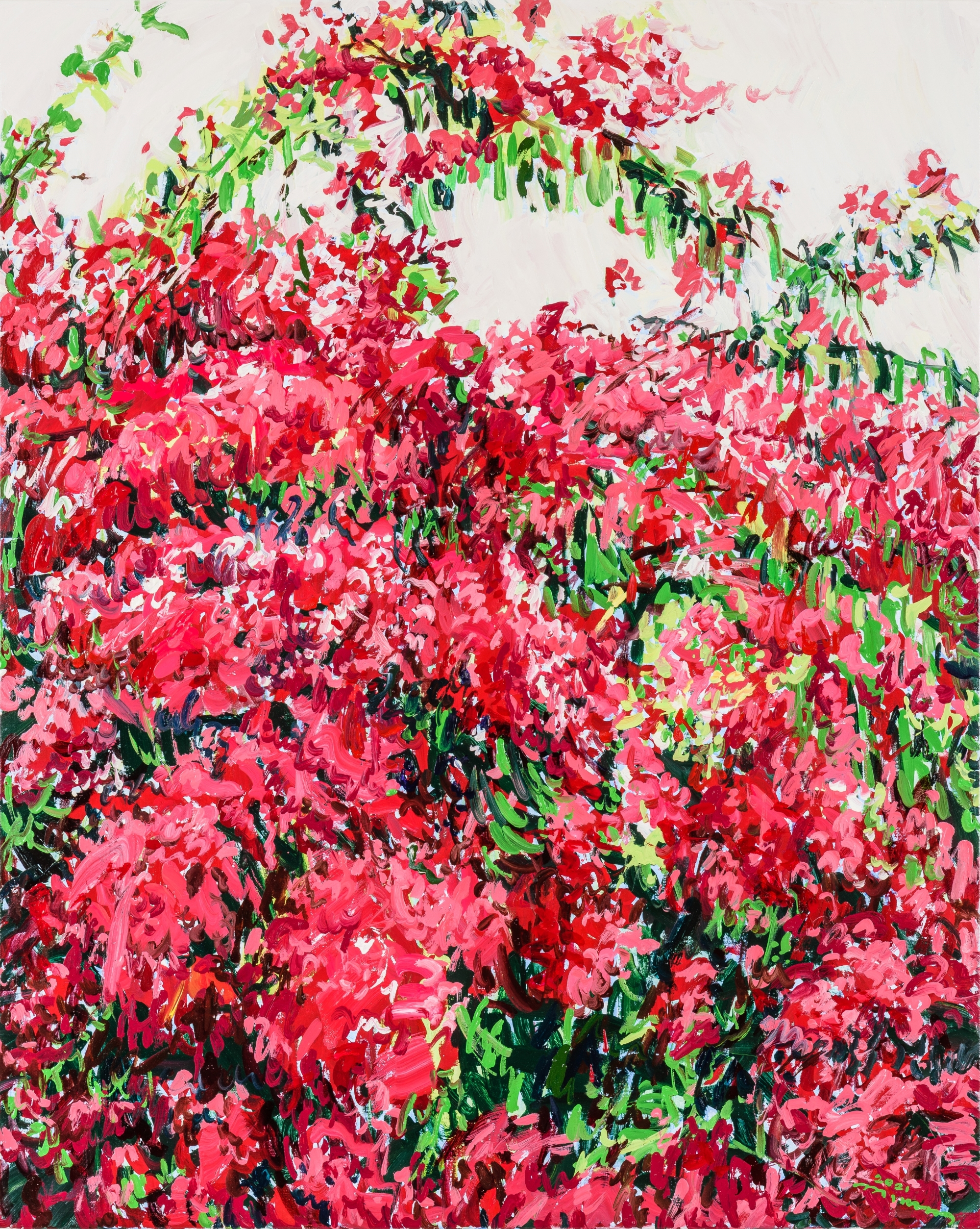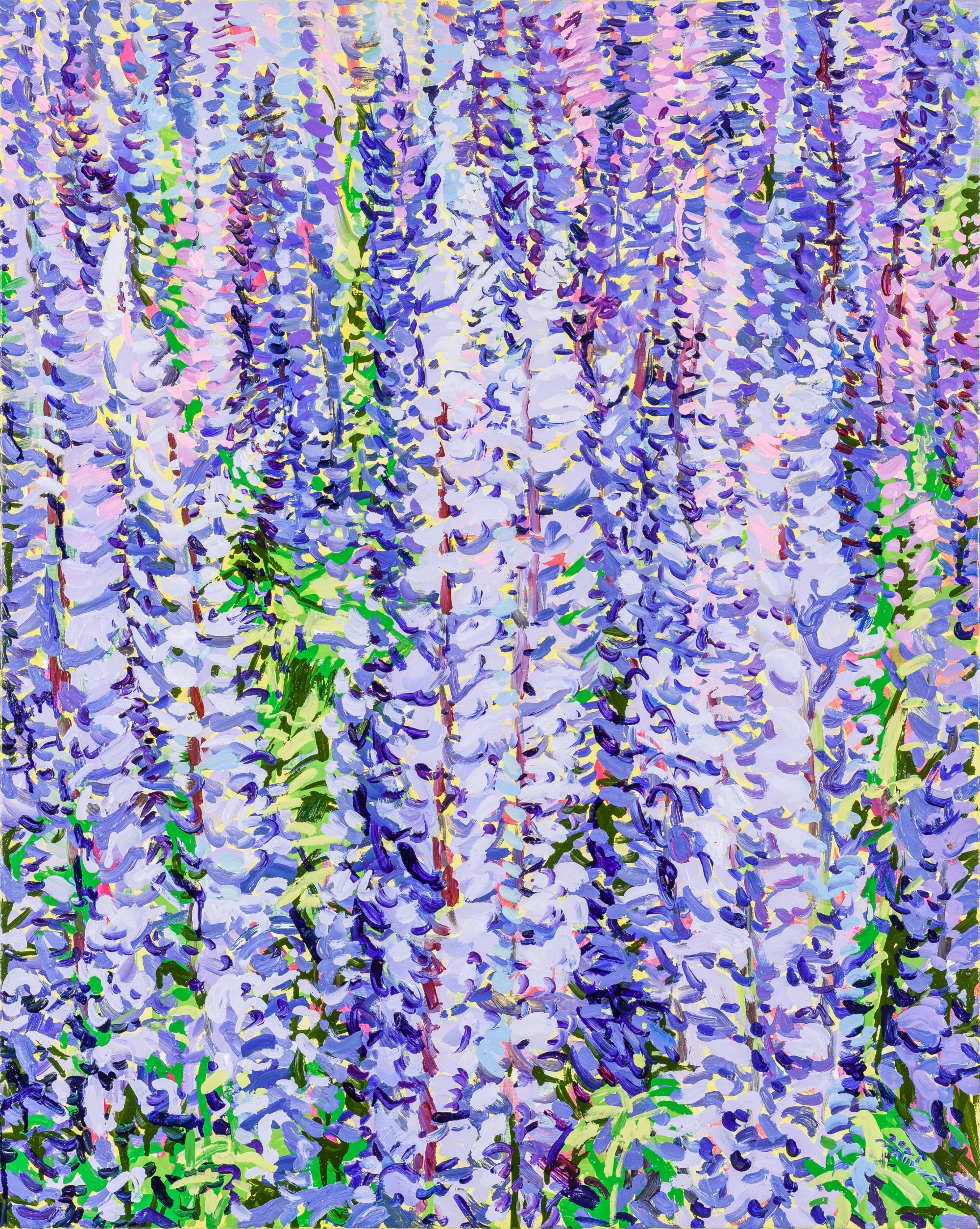
Depicted up close in vivid tones, Boree Hur’s sprawling floral paintings burst with botanical life. The South Korean painter’s immersive approach to her canvases makes it appear as though she is positioned in the midst of her subject matter, rather than observing from a distance. She draws parallels with plant and human life, exploring the vitality, vulnerability and adaptability of both.
The artist has just been invited to reimagine Salvatore Ferragamo’s Tuscan Wildflowers
print for the fashion brand’s pre-fall 2021 multimedia campaign, creating three paintings inspired by the calmness and serenity of the original. Her work was created alongside painter and designer Lucas Beaufort, sculptor Diego Cabezas, illustrator and painter Marina Papi, Italian collective Art Media Studio and illustrator Bijou Karman.
To coincide with the launch of the campaign, Hur speaks about her love of natural forms, Hieronymus Bosch, and the “subtle expression” of Korean words.

How did you choose to interpret Salvatore Ferragamo’s Tuscan Wildflowers print, and what are your favourite elements of the original?
During the pandemic, where so much economic activity and movement was restricted around the world, perhaps two meanings of the print could be considered. One is the idea of a wildflower that floats over a wide field: the heart of everyone who misses the free state of nature and wants to restore it. And second, by referring to the attractive area of Tuscany, I think it’s intended to remind people of their desire to travel and to create pleasant feelings or dreams. I like the black elegant lines in the original print, excluding the various colours of wildflowers. I like the Ferragamo way of depicting wildflowers calmly and serenely.
“Every time I look at a thick forest, I think about the process by which a single small seed grows entangled into such a complex shape”
Your work features a lot of natural forms and organic shapes. What interests you about those, and what do you hope to convey about them when translating them into paint?
Every time I look at a thick forest, I think about the process by which a single small seed grows entangled into such a complex shape. It feels so similar to the way I and the people around me live: plants have ever-changing shapes; overcome the wind and rain with their bodies; are happy when they meet the sun, blooming beautiful flowers. I also think about how much of a battle the roots go through to soak up nutrients from the ground. Plants mirror so much about human life. I want to put the passion and joy of such life on the canvas with my free brush strokes, and make the viewer think about lives—long and short, weak and tough—and the vitality of plants.

Which piece of art has had the most profound impact on you?
The more I work, the more I feel attracted to classical paintings. I want to see Hieronymus Bosch’s masterpiece The Garden of Earthly Delights in person. It seems that sincerity can be conveyed even after thousands of years—it’s good to have no pretence. And I love Francisco Goya’s The Third of May 1808.
“Plants mirror so much about human life. I want to put the passion and joy of such life on the canvas”
What are you reading at the moment?
Gu Byeong-mo’s Bruised Fruit. I usually read Korean modern novelists, stories of the naked world, which are told by writers of the same age as me, or from the same environment as mine, such as Koo Byung-mo, Kim Um-ji and Kim Soo-young. It is good to be able to fully feel the subtle expressions of Korean words. I don’t like translated works very much, but Kōbō Abe’s The Woman in the Dunes and Virginia Woolf’s A Room of One’s Own are some of my favourite works from outside South Korea.

Where do you feel most at home, and why?
My own home in Seoul. The emotions I feel at home become the root of my work, and whenever I felt it was hard to live as normal, as others live, the cathartic escape I found seemed to be in painting. I eat three meals a day, take care of my children, fight with my husband, and make sure my parents have the right balance of meat and vegetables on the table. It seems that the home contains all the basic and natural things that make up life.
Home is also the place where many people naturally meet their death. I started drawing plants while watching my grandmother’s death, and it was so natural to say “Rest in peace” when her life was over and she was laid in a coffin. My work starts in the family, and I hope that ultimately these personal feelings are the most common emotions in the paintings.






